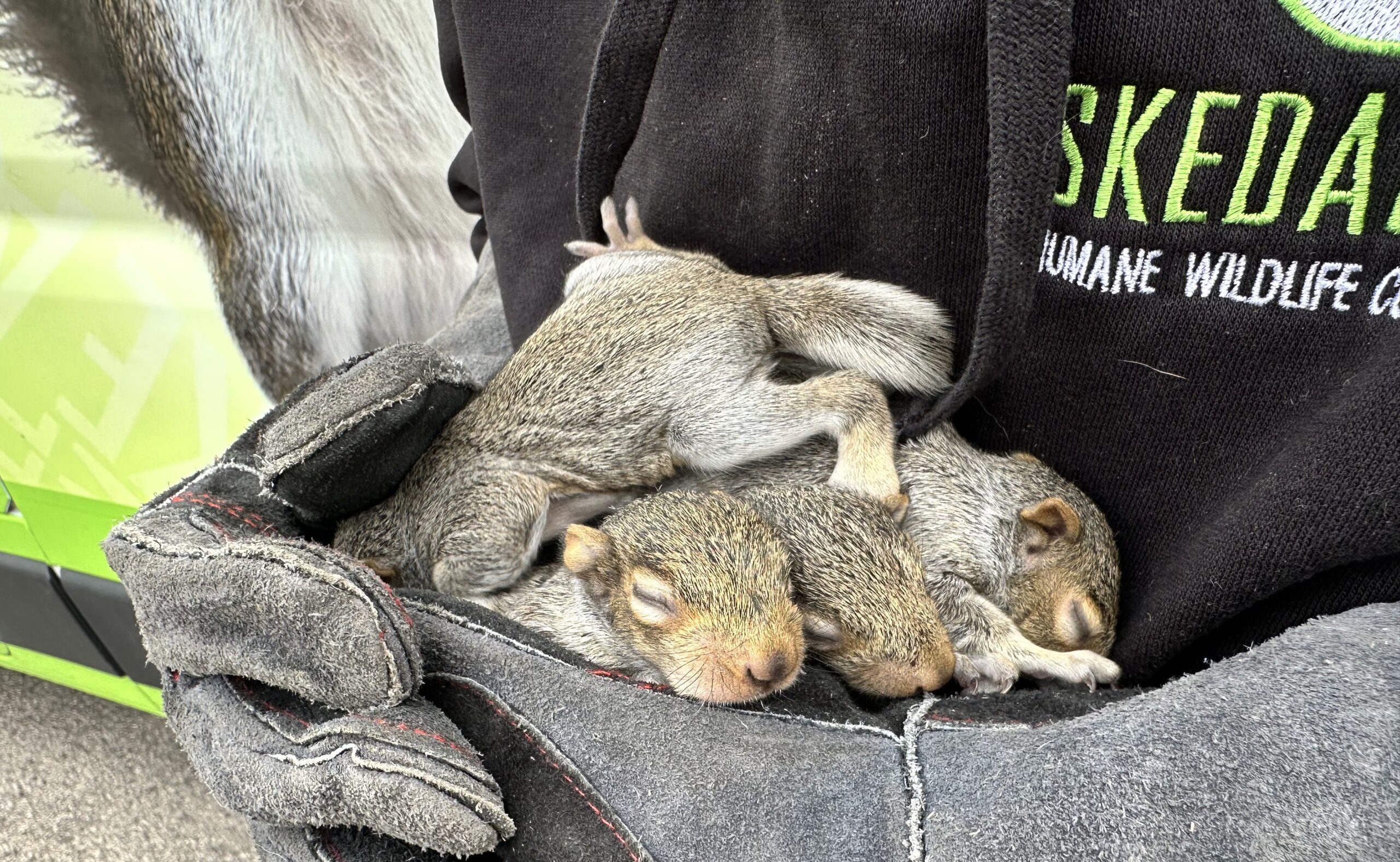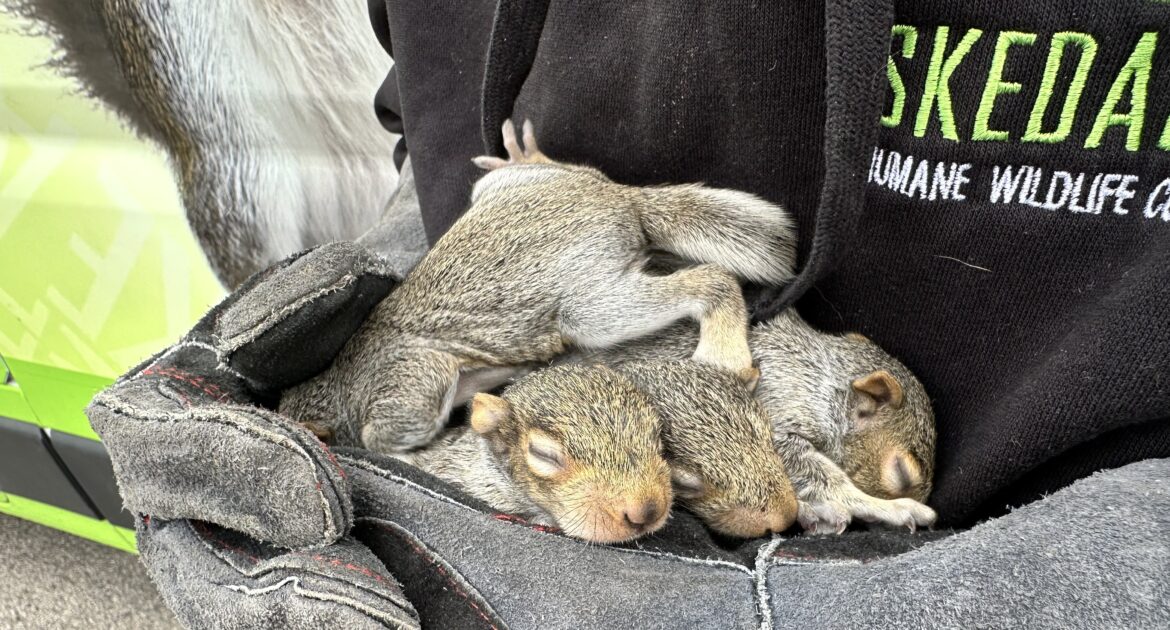If you’ve noticed unusual scratching or scurrying noises coming from your fireplace or chimney in Montreal, there’s a good chance squirrels may be the unexpected houseguest. The openness of many chimneys combined with a squirrel’s climbing skills makes this space an attractive option. It’s a dry, warm, elevated area that provides security against predators. Without proper precautions, chimneys can quickly become squirrel nesting sites. Understanding the how and why behind squirrels in your chimney can help you protect your home from unwanted invasions and the potential damage they bring.
Below, we’ll explore how squirrels in chimneys become an issue, the risks to your home, and what you can do to prevent squirrels in chimneys in the first place.
Chimney Squirrel Entry
It’s surprisingly easy for squirrels to enter your home through your chimney. These agile animals are strong climbers, often scaling trees, electrical poles, and even the sides of homes to access rooftops. Once on the roof, they quickly spot an open chimney and see it as an opportunity. For them, an uncovered chimney is like a hollow tree in the wild, providing the perfect spot to build a nest.
Here’s how the process typically happens:
- Discovery of the Chimney
Squirrels are always on the lookout for safe, elevated locations, especially during mating and birthing seasons. Your chimney, if uncapped, appears as a secure and sheltered space.
- Climbing Down the Flue
Chimneys made with brick or masonry often have a textured interior that makes it easy for squirrels to climb in and out. Smooth metal flues, however, can trap them inside, leading to noises of frantic scratching or even worse, a trapped animal.
- Nesting Behaviour
Females often build nests inside chimneys during spring and late summer to ensure their young are warm and safe. They use nesting materials such as twigs, leaves, and even home insulation if accessible.
- Unnoticed Entry Points
If the damper is open or your chimney has other gaps, squirrels can enter your home. This can lead to significant disturbances and potential damage.
To complicate matters further, once they’ve made their way inside, squirrels are determined to stay and protect their nesting site, particularly if they have babies.
Prevent Squirrels in Your Chimney
The best way to secure your chimneys against squirrels is to take preventive action. Here are practical steps to ensure your chimney remains squirrel-free:
- Install a Chimney Cap
A high-quality, professionally installed chimney cap is one of the simplest and most effective measures you can take. Look for a sturdy steel option with spaces that allow smoke to exit while keeping squirrels (and other animals) out.
- Regularly Inspect Your Chimney
Conduct regular inspections, especially before and after summer, when squirrels are likely to nest. Check for signs such as loose nesting material, scratches along the flue, or droppings near your home.
- Trim Overhanging Branches
Squirrels often use nearby tree branches as their highway to your roof. Trimming these branches to at least six feet from your roof can make it harder for them to access your chimney.
- Secure Other Roof Entry Points
While your chimney might be the most obvious entry point, squirrels can also chew through soffits, vent openings, and loose shingles. Examine your entire roof and seal any potential vulnerabilities.
- Deodorize and Clean
If squirrels have been inside your chimney before, deodorize to remove any scent trails. Remaining scents can attract other squirrels in the area, prompting them to investigate.
- Monitor for Baby Squirrels
Squirrel babies are immobile for the first eight weeks, so if they’re in your chimney, you may not even notice them until activity increases. Professional wildlife control teams, like us at Skedaddle, use humane techniques to identify and remove families without harm.
Taking these measures will not only safeguard your chimney but also prevent greater risks for your home.
Hazards of Squirrels in Chimneys
Once squirrels have entered your chimney, the situation can escalate quickly. Here are just a few of the risks involved:
- Physical Damage
Squirrels frequently chew to keep their growing teeth in check. This behaviour can lead to chewed damper components, damaged masonry, and even compromised structural integrity of the chimney.
- Nesting Material Hazards
Nests made of dry leaves, twigs, and other flammable materials increase the risk of chimney fires if left unchecked. These materials can also clog the flue, preventing proper ventilation.
- Health Risks
Squirrel droppings can carry bacteria and diseases, posing a health hazard to your family. Additionally, their fur or nesting materials may bring parasites like fleas or ticks into your home.
- Noises and Disturbances
Persistent daytime scratching or scurrying is not only disruptive but also an early indicator of a potential infestation.
- Entry into Living Spaces
If squirrels gain access to your fireplace or other openings, their presence can lead to stress, property damage, and in some cases, direct human interaction.
If you suspect squirrels in your chimney, time is of the essence. Acting promptly reduces the risks mentioned above while ensuring the situation doesn’t worsen.
Prevent Squirrels in Your Chimney
Preventing squirrels in chimneys involves a combination of home maintenance, preparation, and professional support. Below, we’ve outlined an easy-to-follow numbered list to protect your chimney long-term:
- Cap your chimney with durable, animal-proof steel covers.
- Schedule seasonal chimney inspections, especially during early spring and late summer.
- Trim trees, bushes, and any climbing routes around your home.
- Regularly check attic vents, soffits, and fascia boards for other vulnerabilities.
- Implement a cleaning schedule to keep smells and nesting debris at bay.
- Contact experts (like our team at Skedaddle) for a thorough house assessment and enduring squirrel prevention strategies.
Sticking to these practices will keep your investments safe while contributing to peaceful, squirrel-free living.
Why You Need Professional Squirrel Removal
Professional squirrel removal is essential for ensuring the safety of your home and protecting it against costly damage. Squirrels can chew through wood, wires, and insulation, leading to fire hazards, structural issues, and increased energy costs. Beyond the physical damage, they often carry parasites or diseases that pose health risks to your family.
Attempting to address a squirrel problem without expert knowledge can result in incomplete removal or inadvertently harming the animals, which is both ineffective and potentially illegal in some areas. By choosing a trusted and experienced team, like Skedaddle, you benefit from humane wildlife control methods, thorough removal processes, and proactive prevention services designed to keep squirrels from returning.
Our professionals understand squirrel behaviour and will customize a solution that suits your unique situation. Investing in professional service protects your property while offering peace of mind and a commitment to humane, environmentally responsible practices.
Take Steps to Protect Your Home
Whether your house is nestled close to Mount Royal Park or in the heart of downtown Montreal, a proactive approach to keeping animals out of your chimney will preserve both your peace of mind and your home’s structural integrity. At Skedaddle, we’ve helped countless homeowners safeguard their properties from squirrel intrusions and the damage they bring.
If you’re in need of a thorough chimney assessment or you want to implement long-lasting preventative strategies, give us a call today. Together, we’ll ensure that your home remains secure and squirrel-free.




